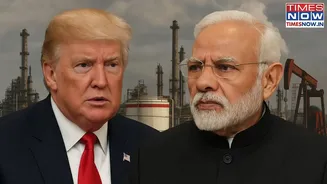Sanctions Impact & Response
The US government's decision to sanction Russian oil companies Rosneft and Lukoil triggered a significant response in the crude oil market. Immediately
after the sanctions were publicized, both Brent and West Texas Intermediate (WTI) crude oil futures surged. This upward trend was further fueled by rising energy demands within the United States. Tony Sycamore, a market analyst at IG, noted that the price increase, although present, was moderate because prior threats of sanctions and tariffs had been either lessened in effect or postponed. He also mentioned that the implementation of the sanctions faced difficulties. This initial market reaction highlights the sensitivity of oil prices to geopolitical events and the complexities of enforcing such measures. As a result, Brent crude futures were up by $1.76, or 2.81%, reaching $64.35 by 0041 GMT, and US West Texas Intermediate crude futures rose by $1.68, or 2.87%, to $60.18.
Price Gains Examined
Crude oil prices witnessed a substantial rise, with gains extending from the prior session, following the US sanctions targeting Rosneft and Lukoil. Brent crude futures saw an increase of $1.76, or 2.81%, trading at $64.35, while US WTI crude futures rose by $1.68, or 2.87%, reaching $60.18. This escalation came in the wake of the US imposing restrictions on Rosneft and Lukoil. The US government also signaled a readiness to pursue further actions and urged Moscow to immediately agree to a ceasefire in its conflict in Ukraine. Before this, President Donald Trump had largely refrained from implementing sanctions concerning the war, opting instead for trade-related measures. Britain also imposed sanctions on Rosneft and Lukoil the previous week. In a parallel development, EU member states approved a 19th set of sanctions against Russia, which included a ban on importing Russian LNG. These combined actions highlighted the multifaceted nature of the international response to the conflict and its implications on energy markets.
US Actions' Rationale
The US Treasury cited the ongoing conflict in Ukraine as the primary reason for sanctioning Rosneft and Lukoil. Treasury Secretary Scott Bessent stated that these companies were being targeted because they played a crucial role in funding the Russian government's military operations. The US move aimed to exert economic pressure on Russia, aiming to curb its capacity to wage war. The sanctions were designed to hinder the ability of these major oil entities to operate globally and access financial resources. The US stance reflected a growing international consensus to hold Russia accountable for its actions in Ukraine. The combination of financial pressure through sanctions and calls for a ceasefire underscored the US approach to the conflict, aiming for both economic disruption and diplomatic resolutions. This approach highlights the intricate balancing act between enforcing sanctions and pursuing diplomatic objectives in a volatile geopolitical setting.
Market Dynamics & Future
The market's reaction to the sanctions underscored the complex interplay between geopolitical events and the energy market. Crude oil prices, particularly for Brent and WTI, saw immediate gains, suggesting that investors and traders anticipated a disruption in the supply chain and an increase in prices. The increase of more than $2 a barrel in futures contracts for both Brent and WTI immediately after the sanctions were announced, as well as the increase of over $1 per barrel on Thursday, demonstrate this volatility. However, experts like Tony Sycamore pointed out that past sanction threats had not always resulted in the expected price surges. The ongoing conflict in Ukraine and the corresponding international responses, including sanctions and diplomatic pressures, would continue to shape the oil market's dynamics. The decision by the US to urge Japan, a significant importer of Russian LNG, to halt energy imports from Russia signaled efforts to expand sanctions and enforce their economic impact more widely. These factors suggest that crude oil prices are likely to remain influenced by geopolitical developments for the foreseeable future, making it imperative for stakeholders to monitor these changes carefully.
















